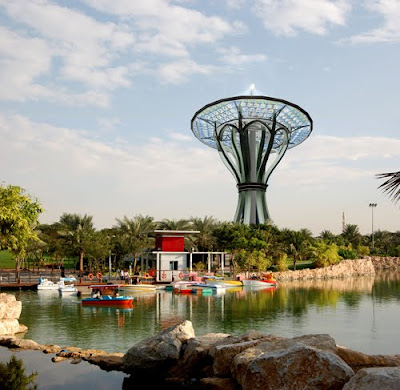The Water Scraper is a true floating city that rises sea \u200b\u200blevel for a few meters, but relying on the entire structure below it, like an iceberg.
This incredible concept has received a special mention in eVolo Skyscraper Competition, for his purposes and ecological self-sufficient since it is one of many solutions to the problem of overcrowded cities and the planet in general. Those who live there (if it is built) will benefit from a fully integrated system which also guarantees the supply needs.
A Guangzhou - 180 km da Hong Kong - è in fase di ultimazione il Pearl River Tower , progetto dello studio di architettura statunitense SOM - Skidmore, Owings & Merrill , dell’altezza di 310 metri e 69 piani ha la particolarità di essere stato progettato according to various eco-friendly principles.
The slots located on the facade are designed to channel air currents in special wind turbines to produce clean energy intended for heating, ventilation and air conditioning the building. The building was considered the optimum orientation to capture all the sunlight and is also equipped with several solar panels and a double-coated glass for greater heat insulation. The ventilation is natural and following the basic principles of bioclimatic architecture.
The design of the building will lead and manage the prevailing winds making them "invisible hands" which help to tighten the tower and was designed to produce more clean energy than it consumes. It will be one of the world's most sustainable skyscrapers.
A Miami another concept the Miapolis , designed by the architectural firm KKAID - Köbi Karp Architecture and Interior Design , can be carried with its 975 meters high and 160 floors will be the tallest building in the world and will surpass the Burj Khafila (formerly known as Burj Dubai) Dubai with the spire height of 828 meters. The
Miapolis the forefront of sustainable design, will be the largest facility certified LEED - Leadership in Energy & Environmental Design that is designed and constructed using the strategies to improve performance metrics such as energy saving , water efficiency, reduced carbon dioxide emissions, improved indoor environmental quality, resource management and sensitivity to their effects. Meet the design requirements of "city within a city."






0 comments:
Post a Comment